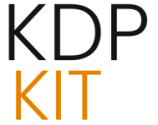The Author as Entrepreneur: Navigating Modern Publishing Structures in the Age of AI

The recent publication of the children’s book, “Is A Plant A Pet?” by Livingston, Texas author Jennifer Trandell, serves as a potent case study for the modern literary landscape in 2025. This venture exemplifies the contemporary author’s absolute requirement to operate as a multifaceted entrepreneur, seamlessly blending creative output with sharp business acumen and advanced digital marketing savvy. In the twenty twenty-five context, composing the manuscript is decisively the initial, though essential, stage in a far more extensive value chain that the author must personally shepherd. This journey mandates strategic execution across format selection, pricing architecture, and promotional infrastructure—all critical components for any successful contemporary literary enterprise.
The Dual Format Strategy: Print Perceived Value Versus Digital Accessibility
The dual-format release strategy—embracing both physical and digital editions—is not merely a best practice but a foundational requirement in today’s diversified market. “Is A Plant A Pet?” launched with a 32-page paperback carrying a retail price of $19.00, positioned against a digital eBook version priced at $14.00.
Catering to Segmented Reader Preferences
The physical book directly targets consumers who still ascribe high perceived value to the tactile experience, the display potential on a bookshelf, or the traditional reading ritual—a value that substantiates the higher price point. Conversely, the eBook caters to the modern imperative for immediate digital accessibility and on-the-go portability. This strategy acknowledges that the readership is not homogenous; different segments of readers possess distinct transactional desires, and a successful author must cater to this segmentation. In the children’s literature category specifically, this duality is often leveraged by parents who purchase the physical copy for established routines, like bedtime, while simultaneously downloading the digital version for travel or supplemental, interactive use, thus making the dual format a means of comprehensive market saturation rather than direct format competition.
Authorial Branding and Online Presence Establishment
A modern author cannot afford to rely solely on any single publisher’s marketing efforts; establishing a direct, resilient connection with the reader base is fundamental for sustaining a career beyond a singular title launch. Jennifer Trandell’s operational engagement with the digital sphere is centralized through the provision of a dedicated website, www.thebotanicaljourney.com.
The Website as the Central Brand Hub
This domain functions as the primary nexus for her authorial brand, extending its scope well beyond the narrative content of “Is A Plant A Pet?”. Such a robust online identity is no longer optional; it constitutes the foundational layer upon which all subsequent author-driven promotional initiatives and community-building projects are constructed in the mid-twenty-twenties. This platform facilitates direct lines of communication with the audience, offers deeper explorations of her artistic inspirations (including her photography), and critically, enables direct-to-consumer (DTC) sales, bypassing major retail algorithms.
The Power of Direct-to-Consumer (DTC) Channels
While centralized digital marketplaces are crucial for initial discovery, a significant counter-trend in 2025 involves independent authors prioritizing DTC sales models. Data indicates a growing percentage of creators are actively managing their own websites to sell content directly, thereby circumventing external commissions and reducing reliance on third-party algorithms. Platforms like Shopify, or integrated e-commerce solutions on a personal author site, empower the creator with richer customer data, greater latitude over promotional structures and pricing, and a substantially larger margin of revenue. For Ms. Trandell, this website is the essential tool for cultivating a core audience invested in her entire body of nature-focused creative work.
Email Marketing as a Foundational Acquisition Tool
In the context of DTC success, email remains a remarkably potent and high-ROI marketing channel. Projections for 2025 indicate approximately 4.59 billion email users worldwide. For direct-to-consumer (DTC) brands, including independent authors, email marketing is fundamental for both acquisition and retention. Personalized messaging is strongly correlated with performance, with reports suggesting that personalized emails yield transaction rates up to six times higher than non-personalized counterparts. For small businesses, including independent authors leveraging their websites, email marketing was cited as the most frequent strategy for both finding new and retaining repeat customers in 2024.
Technological Infusion: Artificial Intelligence Reshaping the Authorial Workflow
The context underpinning any 2025 book release is a publishing ecosystem profoundly influenced by generative Artificial Intelligence. AI has transitioned from a peripheral utility to an integrated, workflow-defining element, impacting processes from initial concept ideation through to final production stages. Authors and publishing houses are currently engaged in high-stakes deliberation on how to integrate these powerful systems while preserving the critical human element that differentiates authentic artistic creation from mere data output.
AI as Co-Pilot: Tools for Drafting and Refinement
In the current environment, AI writing assistants are now commonplace utilities, offering capabilities such as generating detailed structural outlines, suggesting unconventional plot developments, and refining prose for maximum clarity and impact. For an author operating within the self-publishing sphere—often implying more constrained resource allocation—these tools offer invaluable speed gains on the journey from concept to submission-ready manuscript. They permit the creator to dedicate more concentrated cognitive resources to the irreplaceable aspects of their storytelling: the unique voice, the specific emotional resonance, and the core message. The very acts of book production, from generating search engine-optimized promotional summaries to ensuring grammatical precision across the text, are increasingly streamlined by these digital aids, allowing for quicker turnaround times in a market that rewards both consistency and speed, particularly within high-volume editorial niches.
Ethical Considerations in AI-Assisted Content Generation
The widespread integration of AI is, however, fraught with significant friction points and complex ethical quandaries that are the subject of intense, industry-wide debate as of mid-2025. Central concerns revolve around the unauthorized ingestion of existing copyrighted material to train large language models, creating the potential for significant intellectual property disputes between creators and the technology conglomerates developing these systems. Publishers and authors must actively navigate a legally ambiguous area where the demarcation between AI-assisted enhancement and outright AI-generated derivation is increasingly blurred. For a work such as a children’s book, where the authenticity of the author’s voice and originality are paramount for building parental trust, the authorial posture regarding AI utilization becomes an implicit, yet important, component of the product’s overall marketing narrative.
Landmark Intellectual Property Battles
The legal landscape is actively being shaped by ongoing litigation. A landmark case in the summer of 2025 involved U.S. District Judge William Alsup issuing a split ruling on whether AI developers like Anthropic could legally train LLMs on copyrighted books without author permission. The court found that using lawfully purchased copies for training was “exceedingly transformative” and qualified as fair use, analogous to human inspiration. However, this defense was rejected for the use of over 7 million pirated books, resulting in a precedent-setting settlement where Anthropic agreed to pay $1.5 billion into a fund, compensating authors at approximately $3,000 per work, while also agreeing to destroy all infringing copies. This case underscores the tension that authors must consider: while transformative use may be protected, unauthorized ingestion faces severe legal consequences, compelling technology companies to balance innovation with creator rights. Furthermore, the European Union’s landmark AI Act is now in full implementation across 2025, imposing stringent documentation and transparency requirements on high-risk AI systems, setting a global standard for ethical AI deployment.
The Reader Experience Paradigm Shift: Interactivity and Immersion
Moving beyond the tools utilized in creation, the most profound transformations are occurring in the *method* of content consumption. The 2025 reader demands an engagement that mirrors the interactive nature of their other digital activities, a truth that is especially pronounced in the juvenile literature sector, where multi-sensory input demonstrably enhances engagement and educational retention.
The Promise of Enhanced Digital Texts for Young Readers
The concept of the “Enhanced eBook” is gaining significant market traction, progressing beyond simple hyperlinks to offer substantive, interactive functionality. For a title focused on natural subjects, like botany, this functionality can manifest as embedded, touch-activated animations of a seedling’s growth, short instructional video clips of real-world gardening practices, or integrated comprehension quizzes. Such interactivity actively transforms passive reading into an active, dynamic exploration, an experience traditional print media cannot replicate. The market for interactive children’s books is currently valued at approximately $3.2 billion as of 2025, with an expected steady growth rate of around 4% CAGR, primarily driven by these technological integrations.
The industry is also witnessing the growing adoption of deeper immersive technologies, such as Augmented Reality (AR) and Virtual Reality (VR), which remain nascent but increasingly viable for children’s content. AR-enabled books allow characters to appear to jump off the page and interact with the reader’s environment via a tablet or smartphone, making the story a dynamic experience rooted in the reader’s physical space. For a book about nature, the potential for an AR overlay that brings the fictional plants and characters to life on the reader’s table represents a tangible future possibility stemming directly from this current trend toward immersion.
Exploration of Social Reading Communities and Engagement
The historically isolating activity of reading is being vigorously counteracted by social technology, extending the communal aspect of book clubs into the digital realm. “Social reading” facilitates asynchronous or real-time sharing of annotations, commentary, and reactions within the reading application itself, fostering a sense of shared cultural event around a specific title. The influence of larger social media spaces, like BookTok and Bookstagram, cannot be overstated; these movements are actively driving book sales and championing authors, with 28% of readers reporting that social media has influenced their reading habits “to a great extent” in 2025.
Beyond broad social platforms, authors are finding efficacy in cultivating micro-communities on private platforms such as Discord, Patreon, and dedicated Facebook Groups. Authors report that building direct relationships with their biggest fans constitutes **64%** of their social media goals. For a title like “Is A Plant A Pet?”, this intimate digital structure could allow parents to share favorite passages or educators to facilitate structured thematic discussions, building a base of highly engaged readership loyal beyond simple transactional sales.
Market Dynamics and Distribution: Reaching the Modern Consumer
Regardless of the sophistication of its format or the integration of technology, a compelling book will remain commercially invisible without an optimized distribution and marketing architecture. The author from Livingston, TX, is necessarily engaging with a market that increasingly favors diverse sales channels and content formats beyond the standard e-book file.
The Ongoing Ascendancy of the Audiobook Format
One of the most undeniable forces reshaping the 2025 publishing world is the accelerating consumer demand for audio content. The audiobook market continues an impressive upward trajectory, with growth rates outpacing both print and standard e-book sales in key global sectors. This expansion is fundamentally driven by the consumer desire for multitasking—the ability to consume literature while commuting, exercising, or performing other tasks. The global audiobook market size was estimated at USD 8.70 billion in 2024 and is projected to grow to USD 11.06 billion in 2025. Crucially, AI tools are central to this growth; the AI-generated voiceover narration market alone is projected to grow at a CAGR of 22.3% between 2024 and 2025. AI audiobooks are estimated to account for 23% of all new releases in 2025, and major distributors like Spotify and Audible are now accepting them, provided they pass authenticity verification protocols. Authors are now strongly encouraged to consider “audio-first” experiences, as cost-effective AI narration tools offer a vital, accessible layer of market reach that no contemporary creator can responsibly overlook.
Broader Implications: Following the Trajectory of Independent Digital Content
The story of an author in Livingston, Texas, releasing an ecologically themed children’s e-book is ultimately a microcosm of the industry’s future trajectory, which is increasingly defined as decentralized, technologically proficient, and format-agnostic. The measure of success for such an endeavor is complex, assessed not solely on units moved, but on the author’s proficiency in integrating these disparate modern trends into a cohesive, marketable narrative asset.
Anticipating Future Shifts in Reader Consumption Habits
Observing this author’s trajectory offers predictive value for the mainstream publishing sector. The author’s willingness to embrace a multi-format strategy, leverage online branding, and engage with digital trends suggests that the successful book of the near future will be, by design, a flexible, multi-faceted digital asset first, supported by the enduring, nostalgic appeal of its physical iteration. Tracking the promotional performance—specifically the use of essential discovery platforms like TikTok and Instagram Reels—provides critical insight into the efficacy of grassroots, author-driven marketing versus traditional publisher-led campaigns in the mid-twenty-twenties.
The Enduring Value of Authentic Human Storytelling
Despite the sweeping technological advancements and market shifts, the continued relevance of this local news item rests on its authentic core: the genuine passion for nature translated into a story for children. As the digital shelves become saturated with AI-generated content, the market will inevitably cultivate a counter-craving for material undeniably rooted in specific, lived human experience, emotion, and context. Jennifer Trandell’s personal connection to gardening and conservation provides that specific, authentic anchor. The ultimate implication of this evolving e-book sector is clear: while technology dictates the *how* of content distribution, genuine, human-centered narrative will always dictate the *why* readers ultimately choose to engage with and invest in a specific work. The story originating from Livingston, TX, is therefore less about the e-book format itself and more about the resilience of meaningful narrative within a technologically mediated age.









